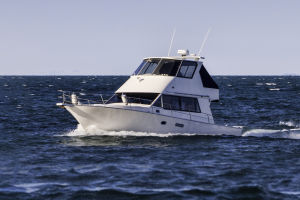Sailing has long been a blend of adventure, skill, and innovation, pushing the boundaries of what is possible on water.
Among the remarkable advancements in sailing technology, the creation of sailboats capable of reaching speeds nearing 100 kilometers per hour stands out as a testament to human ingenuity and the relentless pursuit of speed.
This essay explores the evolution of high-speed sailboats, the technology behind their impressive performance, and the significance of their achievements in the world of sailing.
Evolution of High-Speed Sailboats
The quest for speed on water has been a driving force in sailing for centuries. Traditional sailboats, limited by the physics of hull design and wind resistance, achieved moderate speeds. However, the introduction of advanced materials, innovative designs, and new sailing techniques in the 20th and 21st centuries revolutionized the sport.
One pivotal moment in this evolution was the development of hydrofoil technology. Hydrofoils are wing-like structures attached to the boat's hull, lifting the boat above the water as it gains speed. This significantly reduces drag, enabling sailboats to achieve much higher speeds previously thought impossible.
The Technology Behind High-Speed Sailboats
Several technological advancements contribute to the remarkable speed of modern sailboats. Key components include:
- Hydrofoils: These critical structures reduce drag by lifting the boat above the water's surface. As speed increases, hydrofoils generate lift, allowing the boat to "fly" over the water and minimizing frictional resistance.
- Lightweight Materials: Advanced composite materials, such as carbon fiber, have drastically reduced the weight of modern sailboats while providing necessary strength and rigidity essential for high speeds.
- Aerodynamic and Hydrodynamic Design: Meticulously crafted hull shapes, sail configurations, and structures optimize air and water resistance, enhancing overall performance.
- Advanced Navigation and Control Systems: Sophisticated systems help sailors monitor wind conditions, adjust sails, and control hydrofoils precisely, ensuring optimal performance at high speeds.
Notable High-Speed Sailboats
Several sailboats have achieved speeds close to 100 kilometers per hour, showcasing the pinnacle of sailing technology. One notable example is the Vestas Sailrocket 2, which in 2012 set a world speed sailing record of 121.06 km/h (65.45 knots) over a 500-meter course, thanks to its unique aerodynamic efficiency and hydrofoil technology.
Another remarkable sailboat is the Hydroptere, a French hydrofoil trimaran that broke multiple speed records. In 2009, it reached a speed of 95.2 km/h (51.36 knots) in open water, highlighting the potential of hydrofoil technology in achieving unprecedented speeds.


